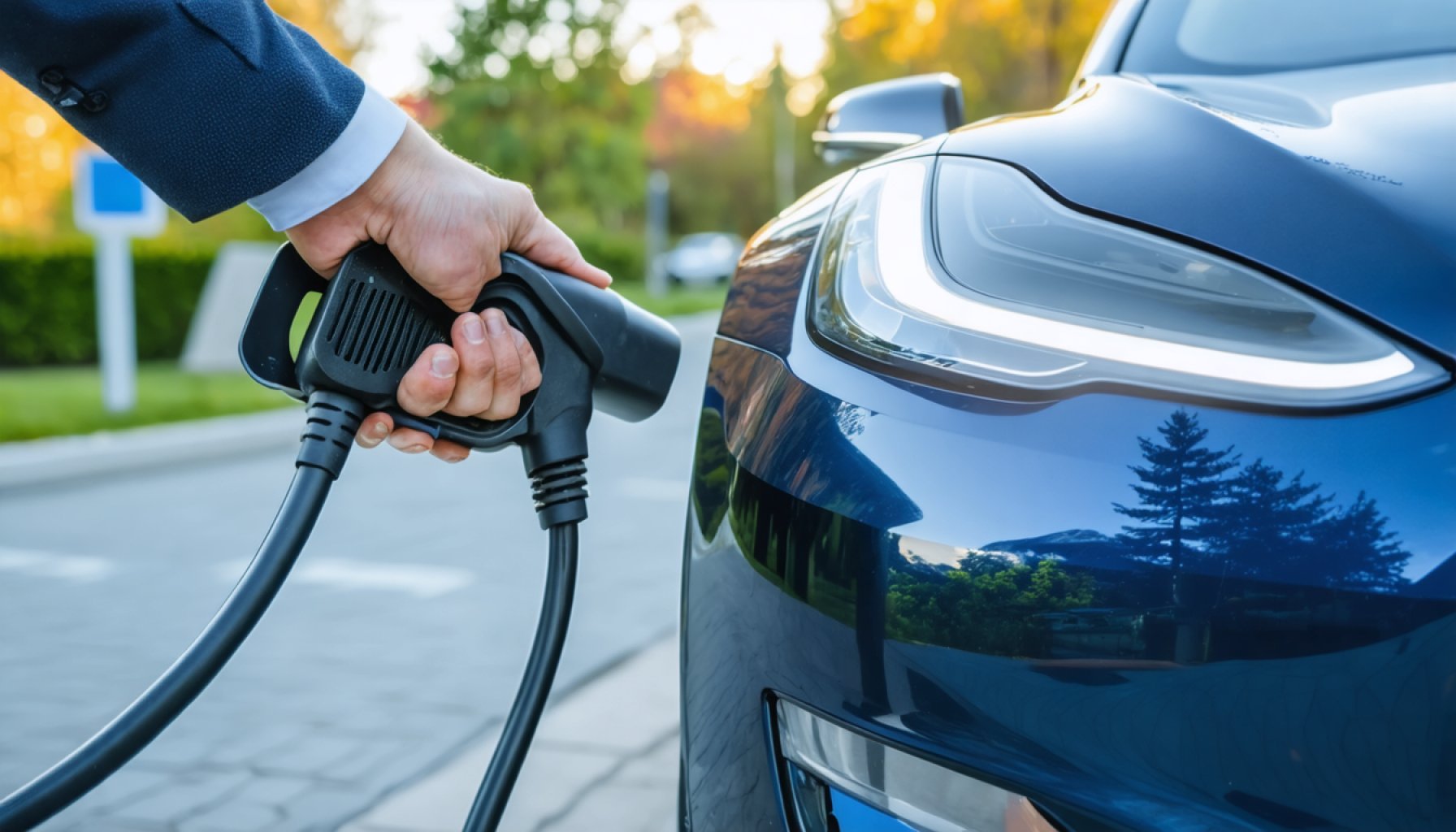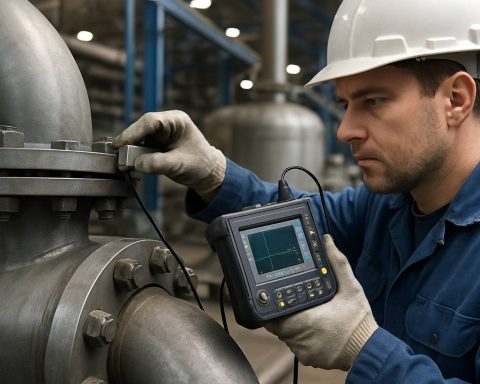- A revolutionary battery anode from South Korea could transform electric vehicle (EV) technology, enabling 20-minute charge times and over 1,500 charge cycles.
- This innovation tackles key EV challenges: sluggish charging speeds and limited battery lifespan.
- The anode merges hard carbon with tin nanoparticles, facilitating rapid ion movement and higher energy storage.
- Despite tin’s swelling challenges, researchers used a sol-gel method and thermal reduction to ensure stability and performance.
- The new anode offers 1.5 times the energy density of traditional graphite anodes, extending EV driving ranges without larger batteries.
- This advancement shows promise beyond lithium-ion batteries, potentially benefiting sodium-ion battery technology as well.
- While mass-market adoption requires further development, this breakthrough could enhance renewable energy grids and redefine charging stations as quick conveniences.
Amidst the swirling currents of innovation blowing across the technological landscape, a beacon of hope has emerged from South Korea—a groundbreaking battery anode that could redefine the future of electric vehicles (EVs). Envision a world where charging your EV is as swift and seamless as filling a gas tank, coupled with batteries that withstand the test of time. This is not just a dream but a tangible step forward, thanks to the remarkable work of scientists at POSTECH and the Korea Institute of Energy Research (KIER).
With the electrifying promise of a 20-minute charge time and a durability of over 1,500 charge cycles, this new anode presents a solution to the dual challenges plaguing EV technology: sluggish charging and limited battery longevity. These paramount improvements could quell the waves of range anxiety and elevate the EV experience to an unprecedented level of convenience and reliability.
The crux of this innovation lies in the clever fusion of hard carbon and diminutive tin nanoparticles within the anode. Unlike the conventional graphite anodes that dominate today’s lithium-ion batteries, this potent concoction facilitates rapid ion movement and significantly enhanced energy storage—ushering in an era of hyper-efficient charging.
Imagine the hard carbon as a network of tiny tunnels, allowing energy carriers to zip through with agility. Meanwhile, the tin, despite its tendency to swell and falter when singled out, flourishes in tandem with the hard carbon. This synergy enhances performance and boosts energy capacity, turning a historical hindrance into an advantageous asset.
Despite the achievement, this journey was fraught with challenges, especially in overcoming tin’s swelling issues. The research team ingeniously navigated these obstacles by employing a sophisticated sol-gel preparation method and subsequent thermal reduction. This meticulous approach ensured that the tin particles were uniformly embedded, effectively neutralizing the swelling while capitalizing on their energy benefits.
Under rigorous examination, the anode’s prowess became evident. Not only did it sustain stable operation across extensive charge cycles, but it also packed a punch with 1.5 times the energy density of its graphite-based counterparts. This accomplishment portends longer driving ranges for EVs without necessitating bulkier batteries, optimizing both performance and convenience.
This innovation extends its potential beyond lithium-ion batteries. It also shows promise for sodium-ion batteries, heralding a potential shift to a more sustainable and economical solution. The hardy composite structure of hard carbon and tin evinces promise across diverse platforms, adapting with agility and opening doors to future explorations.
While further developments and scaling are essential before this can become a mass-market reality, the implications are profound. It sketches the outlines of a future where charging stations might become as quick-stop conveniences, not impediments. Coupled with the potential to fortify renewable energy grids via robust energy storage solutions, the societal impact of this advancement is profound.
In the grand canvas of technological progress, this anode is not merely a plot point but a potential game-changer—a testament to human ingenuity and the relentless pursuit of a more sustainable future. As the world watches and waits, one thing is certain: the era of perpetually evolving battery technology has just taken an exhilarating leap forward.
Revolutionary EV Battery Breakthrough: Game-Changing Anode Technology
Introduction
Electric vehicles (EVs) are pivotal in the global transition to sustainable transport. As the demand for EVs surges, so does the urgency to address challenges like charging time and battery life. A new breakthrough by researchers at POSTECH and the Korea Institute of Energy Research (KIER) unveils a promising battery anode designed to revolutionize these issues, potentially putting range anxiety and long charging times in the rearview mirror. Here, we’ll delve deeper into this technological advancement, exploring its implications, potential applications, and future impact on the EV landscape.
Key Insights and Benefits
Faster Charging and Extended Battery Life
The new anode material, combining hard carbon and tin nanoparticles, significantly outperforms traditional graphite anodes. These enhancements could enable EV batteries to charge in just 20 minutes and endure over 1,500 charging cycles.
– How It Works: Hard carbon creates a network of “tunnels,” facilitating rapid ion movement, while tin nanoparticles enhance energy storage.
– Solution to Swelling: A sol-gel preparation method ensures uniform distribution of tin, preventing swelling and optimizing energy benefits.
Enhanced Energy Density
These anodes offer 1.5 times the energy density of their graphite-based predecessors. This equates to longer driving ranges without the need for larger batteries, optimizing both vehicular performance and convenience for users.
Broader Implications
Applications Beyond EVs
The anode’s benefits extend to sodium-ion batteries, which can potentially reduce reliance on lithium—a limited and oftentimes geopolitically sensitive resource. Sodium is more abundant, potentially lowering costs and supply chain risks.
– Sustainability: These advancements could support renewable energy grids by providing more robust energy storage.
– Economic Viability: A shift to sodium-ion technology could make energy storage more affordable and accessible.
Market Forecasts & Industry Trends
– WW EV Market Trends: The global market for EVs is expected to grow exponentially, with an anticipated compound annual growth rate (CAGR) of 29% from 2022 to 2030 (source: Allied Market Research).
– Transition to Fast-Charging EVs: As infrastructure develops, the demand for fast-charging and longer-lasting batteries is likely to rise, increasing adoption rates across consumer bases.
Challenges & Next Steps
While the benefits are substantial, scaling this technology for mass production remains challenged by manufacturing complexities and cost considerations. Research and development must continue to address these hurdles before broad market adoption.
Actionable Recommendations
– EV Owners: Stay informed about new battery technologies that can offer better performance, eventually leading to reduced costs and improved user experience.
– Investors and Policymakers: Consider funding and supporting innovations in battery technology and infrastructure improvements.
Conclusion
The synergistic combination of hard carbon and tin nanoparticles marks a significant leap forward in battery technology. Not only does it promise to improve the user experience for electric vehicle owners, but it also signals potential for broader applications in energy storage solutions. This breakthrough underlines the relentless march of technology towards a sustainable future.
For more information on broader energy research and technological advancements, visit the Korea Institute of Energy Research and POSTECH.







